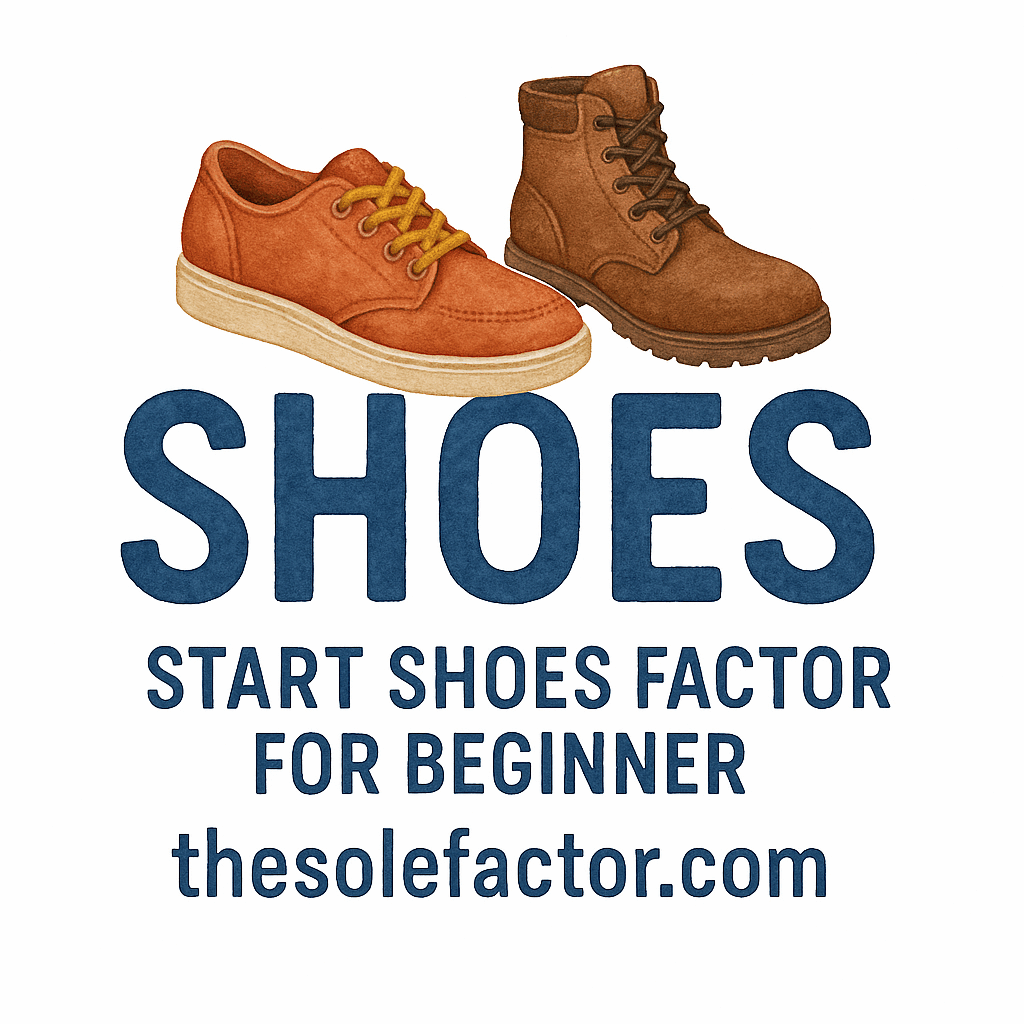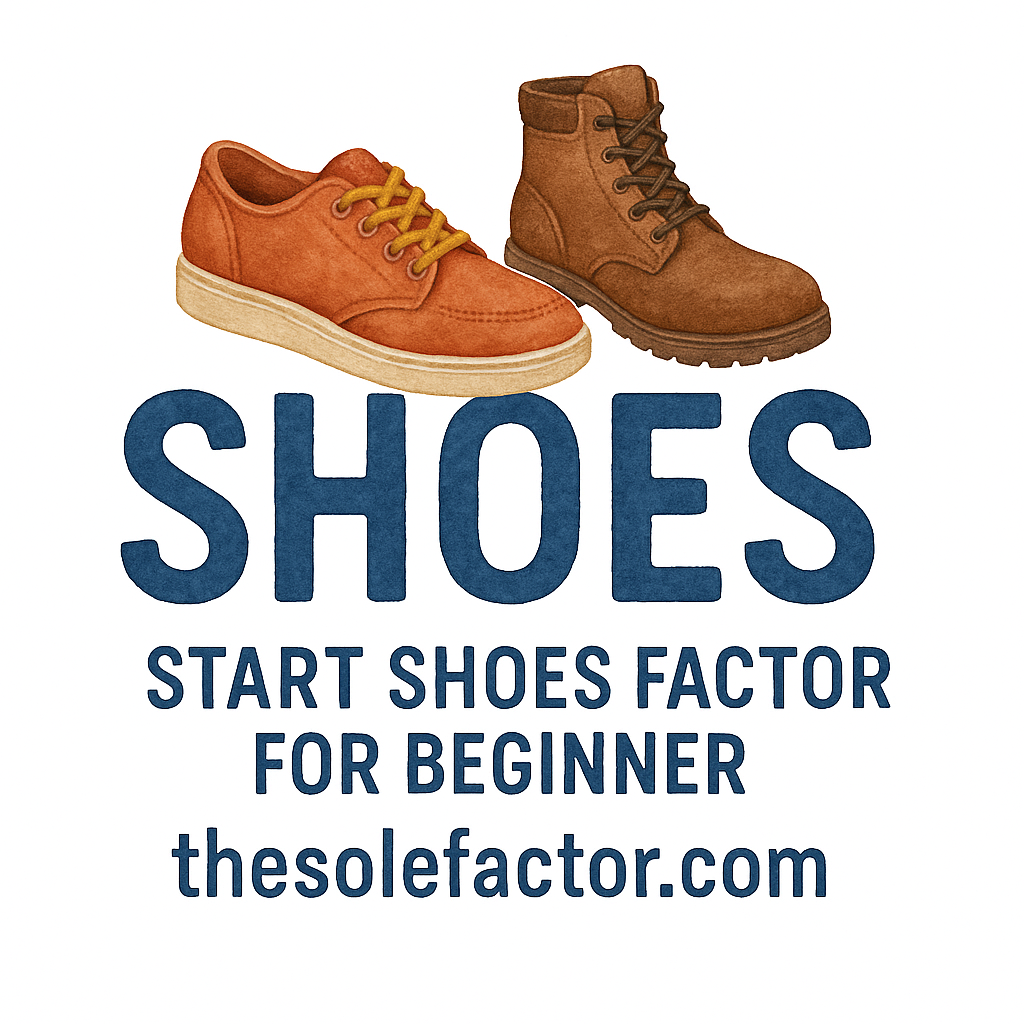Starting a shoe factory is no small feat. It takes planning, budgeting, and most importantly—choosing the right equipment. Whether you’re bootstrapping or testing the waters before a major investment, picking the right budget machines can make or break your startup. In this guide, we’ll walk you through 7 budget machines every small shoe factory needs and how to make smart choices that don’t compromise on quality.
Why Choosing the Right Budget Machines Matters
Cost vs. Quality: The Balancing Act
Let’s face it. You can’t afford to burn cash on fancy machines if you’re still figuring out your first production run. But that doesn’t mean you should settle for unreliable tools. The key is finding that sweet spot between cost and performance.
Want to grow steadily without breaking the bank? Check out our full guide on Operations & Finance for deeper budgeting strategies.
Start Small, Scale Smart
When you’re just starting, flexibility is your best friend. Buy machines that offer multiple functions or can be upgraded down the line. Start lean, learn fast, and grow organically.
Essential Shoe Manufacturing Processes
Understanding Factory Workflow
Before buying anything, you’ve got to understand how shoes are made. From cutting to stitching to finishing, every stage needs the right tool for the job. You can dive into more on this in Shoe Factory Basics.
Stages in Shoe Production
Each shoe goes through several phases:
- Cutting the upper and sole
- Stitching components together
- Shaping using a last
- Attaching soles
- Finishing and polishing
And for each phase, there’s a machine that makes it easier, faster, and better.
7 Budget Machines Every Small Shoe Factory Should Consider
Let’s break down the top 7 budget machines you need to get started.
1. Sole Press Machine
Why It’s Important
Sole pressing is critical—it ensures the outsole sticks properly to the shoe body. A bad press? Expect poor durability and product returns.
Budget Options and Features
Look for semi-automatic hydraulic sole press machines. They’re affordable, compact, and do the job well. A great place to start for first-time factory owners.
Explore the latest tech in Production Equipment.
2. Stitching Machine
Types of Stitching Machines
Depending on your shoe type, you’ll need either a flatbed or post-bed stitching machine. A post-bed is ideal for sneaker startups.
Best Budget Picks
Brands like Jack and Juki offer solid entry-level industrial sewing machines under $800. They’re known for durability and ease of use.
Take a peek at the Shoes Design Trends to see what stitching designs are hot right now.
3. Cutting Press Machine
Manual vs. Hydraulic Options
Manual presses are cheapest but slow. Hydraulic cutting machines are faster and more precise. If you can spare the extra $500–$1000, go for hydraulic.
Affordable Choices for Startups
Used hydraulic presses from trusted manufacturers like Atom can cost as little as $1500. Just make sure to inspect before buying.

4. Skiving Machine
Key Features to Look For
You’ll need this to thin down leather and fabric edges. Look for adjustable skive width and easy blade change.
Entry-Level Models Under Budget
Machines like Fortuna and Camoga offer refurbished models under $900. They’re staples in the small-scale shoe world.
Skiving machines are often discussed in Factory Equipment Planning and Manufacturing Tips.
5. Heat Setting Machine
Why It’s Crucial for Shoe Quality
Ever seen a shoe that collapses like a pancake? That’s what happens without proper heat setting. It locks the shoe shape into place.
Budget-Friendly Picks
Infrared heat setting tunnels or compact ovens are available in tabletop versions. Expect to spend around $1200.
Learn more about Branding Through Quality to see why presentation matters.
6. Lasting Machine
Manual and Semi-Automatic Choices
Manual lasting machines are cheaper and great for short runs. They help you pull the upper around the last tightly for shape retention.
Cost-Effective Models
Start with manual toe and heel lasting machines for around $800–$1500. Combine them with heat for better results.
Check more lasting guides under Shoes Tag and Factory Tag.
7. Finishing and Polishing Machine
Enhancing Product Presentation
A little polish goes a long way. Finishing machines help with edge trimming, buffing, and making shoes look “store-ready.”
Economical Machines for Small Units
Buffing wheels and compact polishers start at $500. Great for home factories and small-scale launches.
Looking to promote your product? Visit Promotion Tips and Social Media Marketing.
Additional Tips for Budget-Conscious Shoe Factory Startups
Buying New vs. Used
New machines come with warranties. Used ones? Cheaper, but inspect thoroughly. Check Startup Essentials for tips.
Renting Equipment Temporarily
Consider renting machines before committing. It helps you test what fits your workflow without upfront cost.
Maintenance Matters
Even budget machines need love. Regular oiling, cleaning, and checking parts go a long way. Prevent breakdowns before they happen.
Need help planning it all? Explore Planning Resources and Budgeting.
Conclusion
Starting a small shoe factory doesn’t mean compromising on tools. The right budget machines can lay the foundation for quality production, happy customers, and long-term growth. Focus on what matters: functionality, durability, and support. With these 7 essential machines, you’re already halfway to success.
Explore more expert guides, planning tips, and industry trends at The Sole Factor. From marketing to machines, we’ve got you covered.
FAQs
1. Can I start a shoe factory with just these 7 machines?
Yes! These machines cover the basic production cycle. As you scale, you can upgrade or add more specialized tools.
2. Where can I buy budget shoe machines?
Look into online B2B marketplaces, liquidation sales, or even refurbished equipment sellers. Make sure to inspect or get reviews first.
3. Is it better to rent or buy when starting out?
If you’re unsure of your production volume, renting can be a safe and budget-friendly way to test.
4. How do I maintain budget machines for longer life?
Follow the manufacturer’s guidelines, perform weekly checks, and clean regularly to avoid dust and moisture build-up.
5. Can I use home-grade machines to produce shoes?
You can start with them, especially for prototyping, but for actual market-ready production, invest in industrial-grade machines.
6. How do I keep up with new shoe production technology?
Subscribe to The Sole Factor Blog or check out Manufacturing Innovations.
7. What’s the most important machine for beginners?
If you’re just starting, prioritize a good stitching machine and cutting press—they cover core tasks in shoe assembly.


